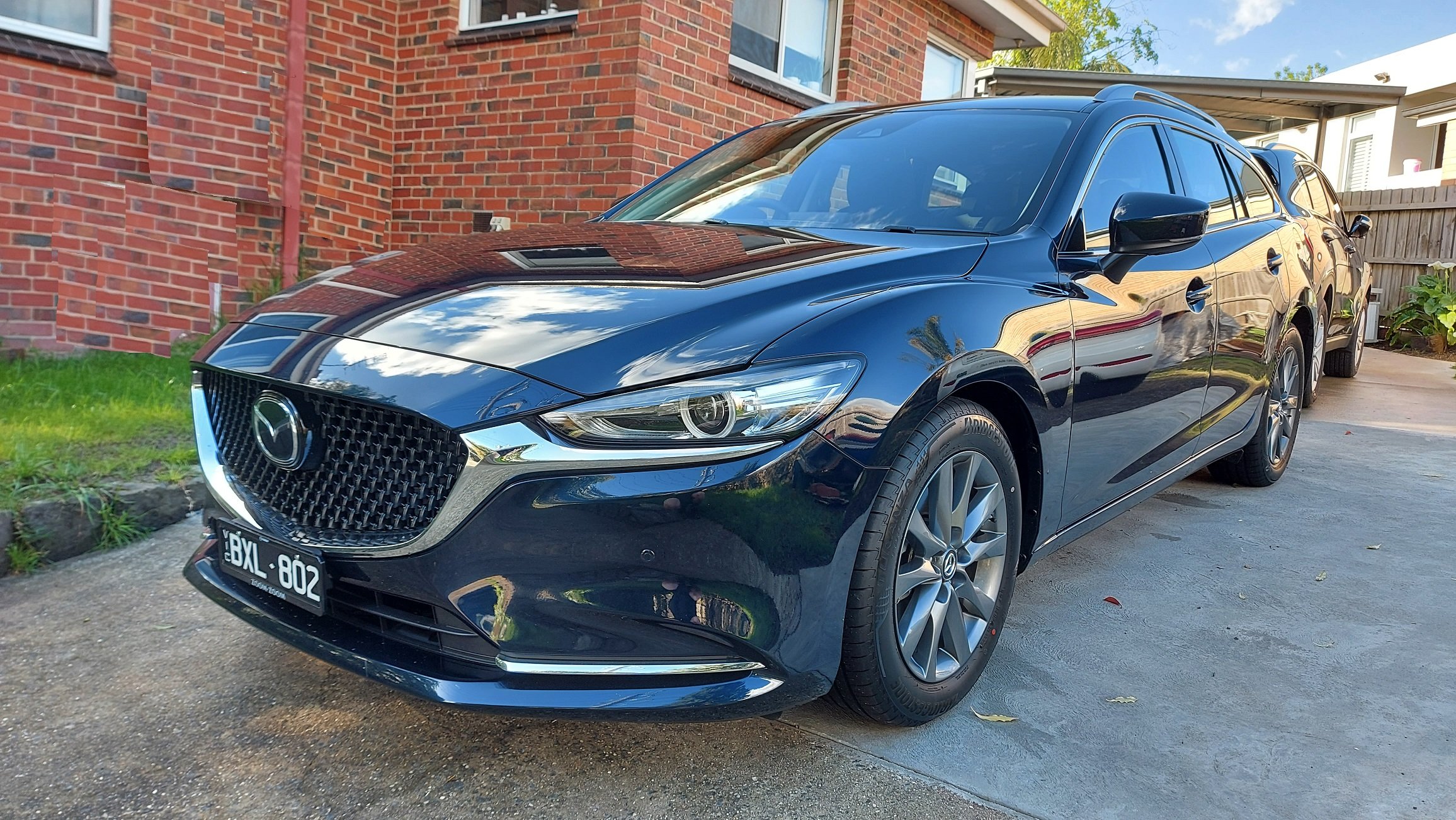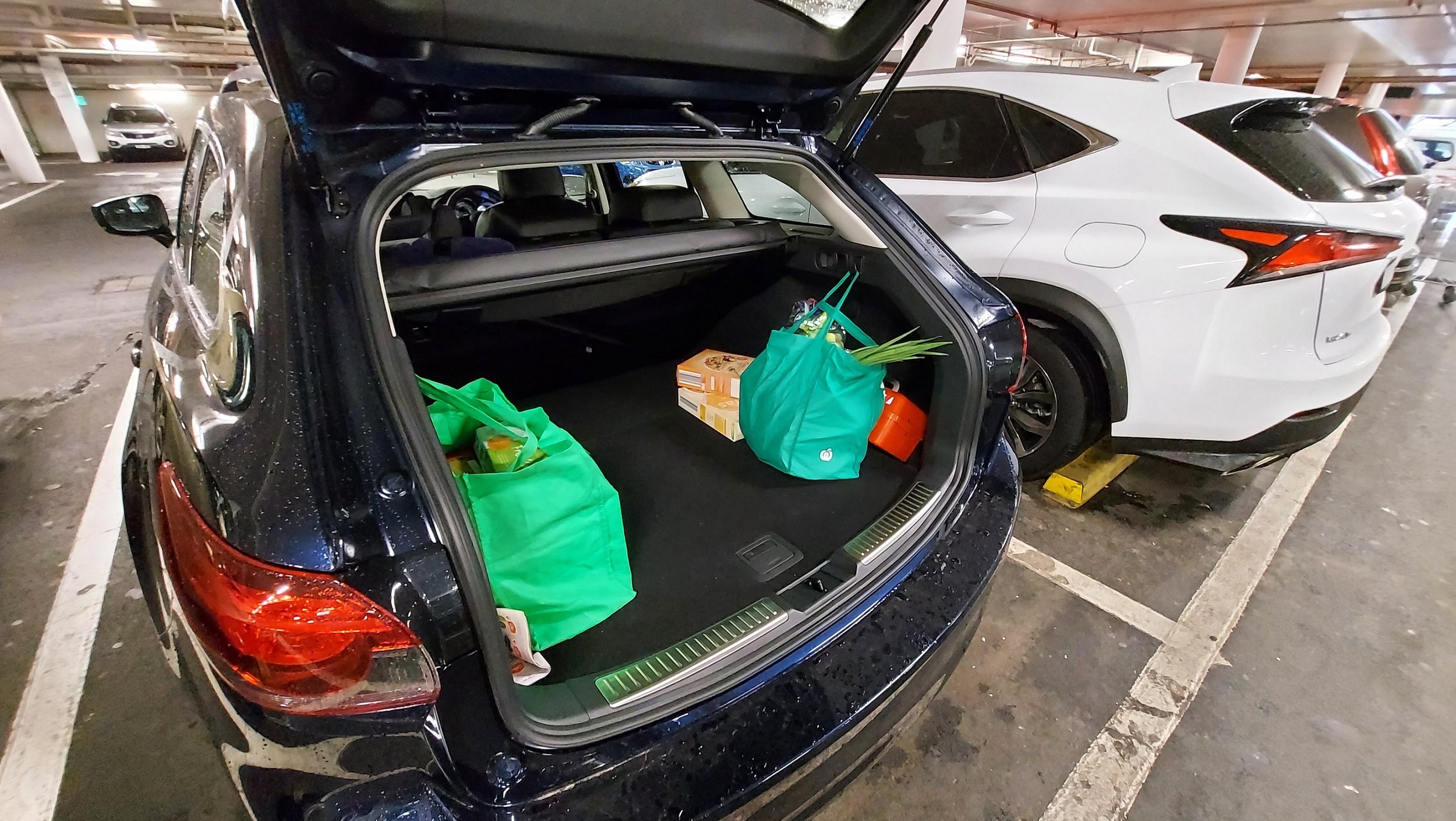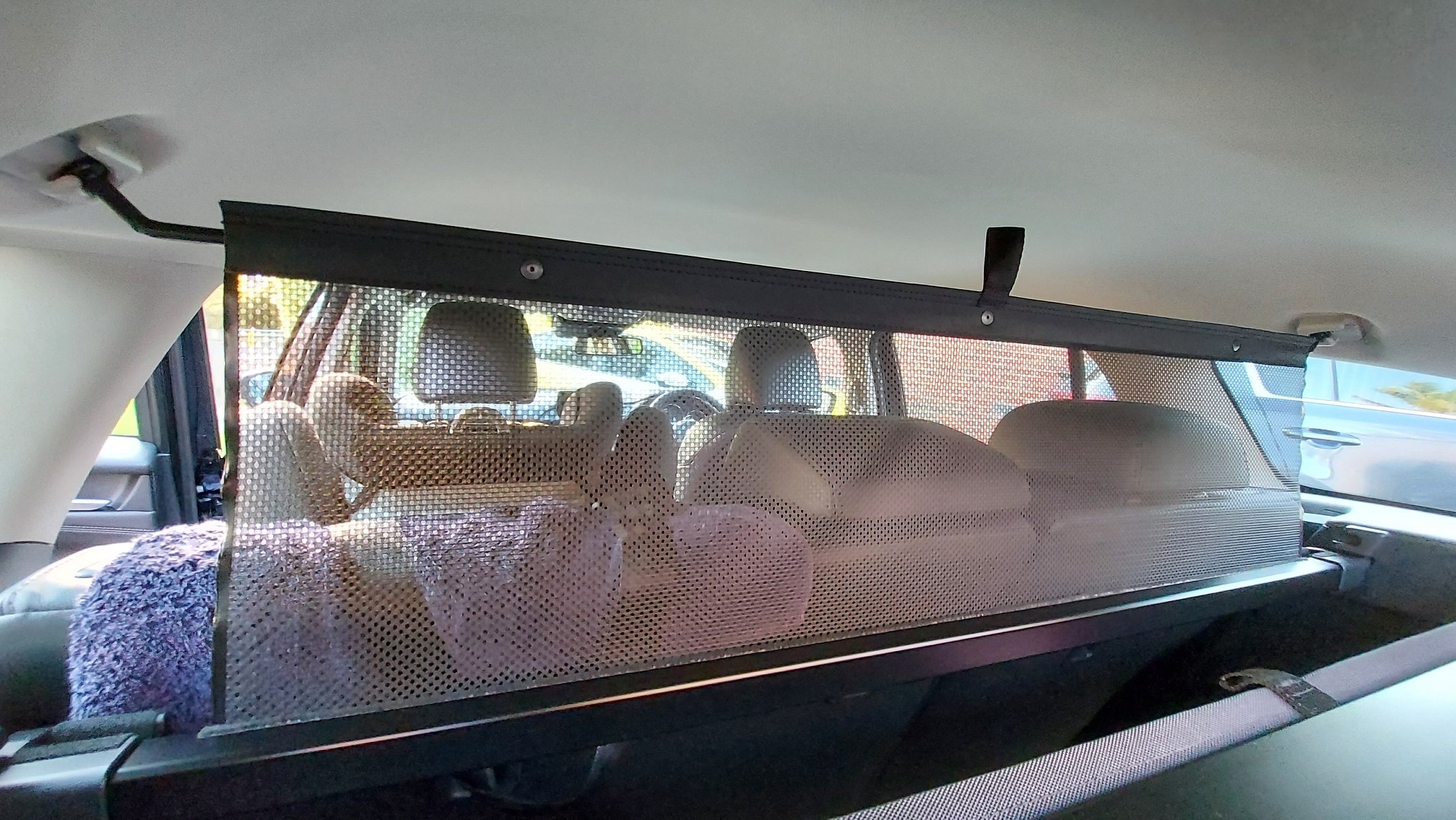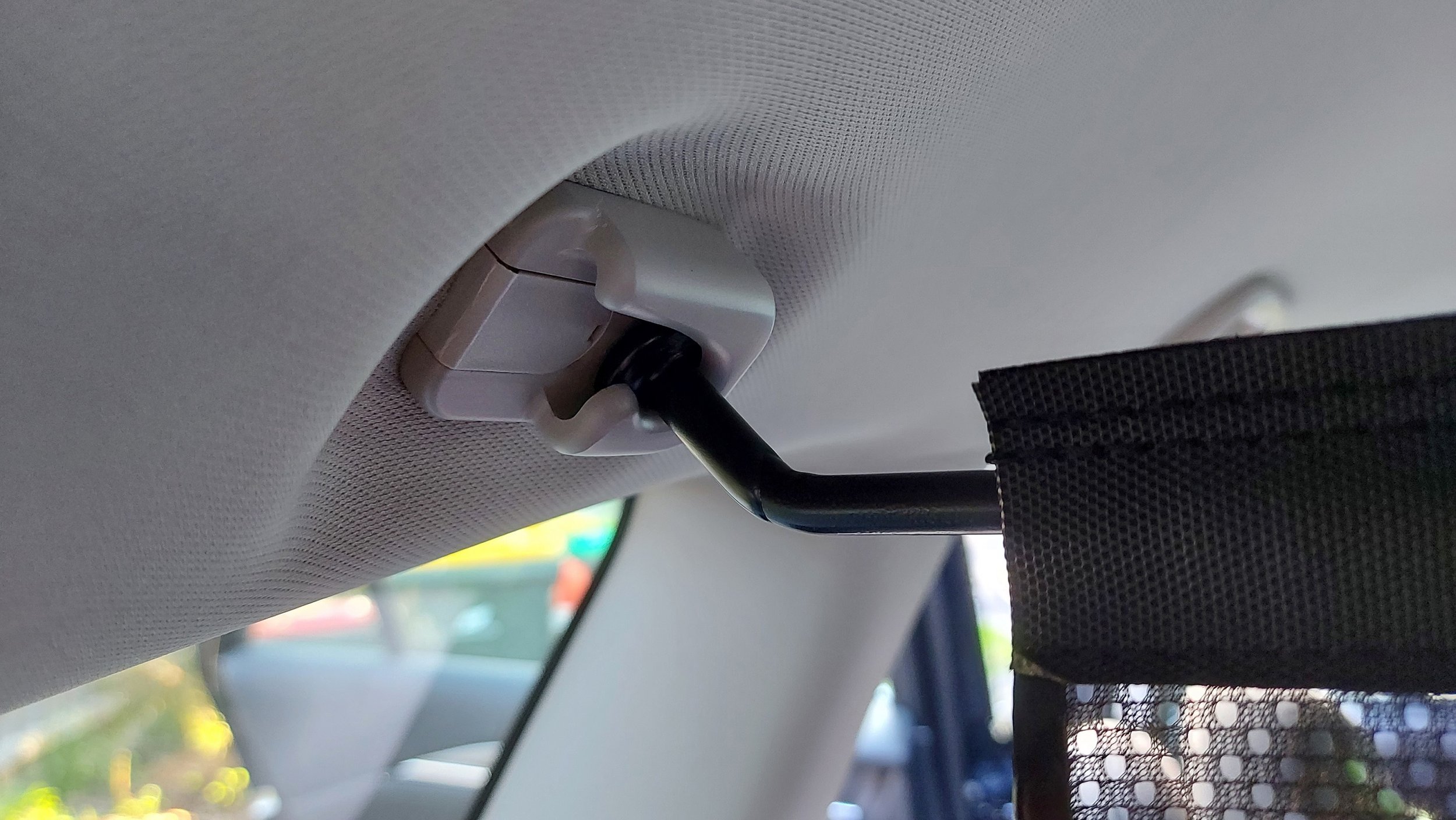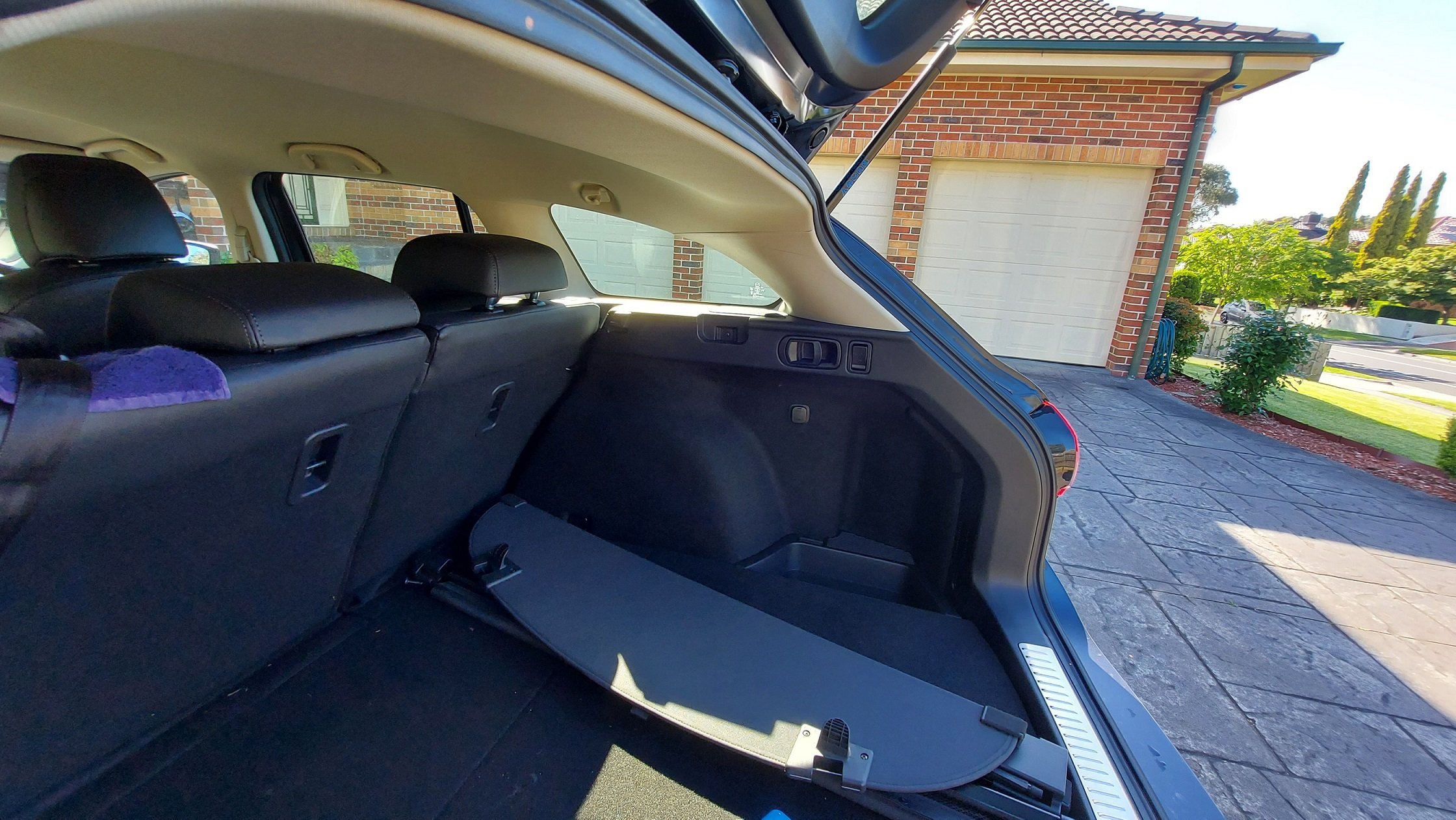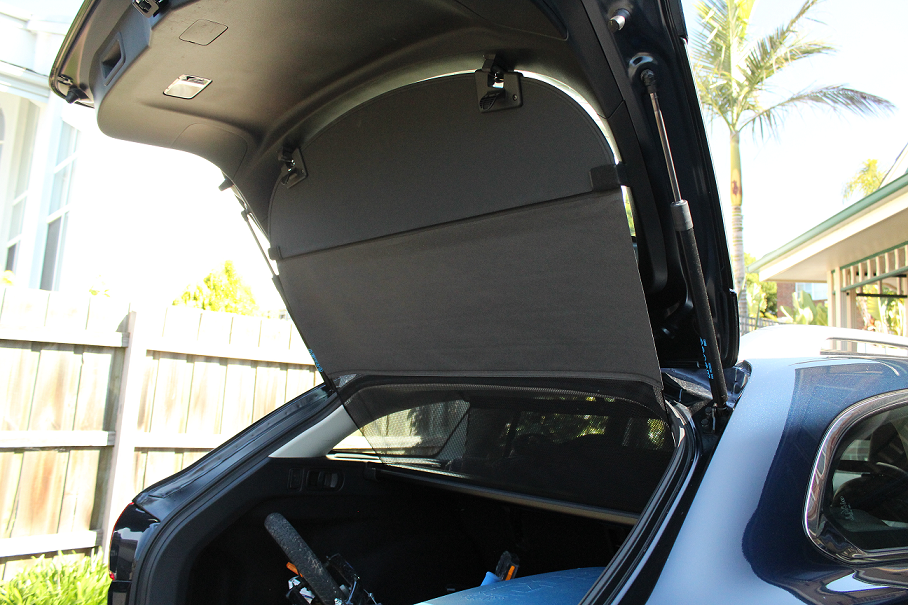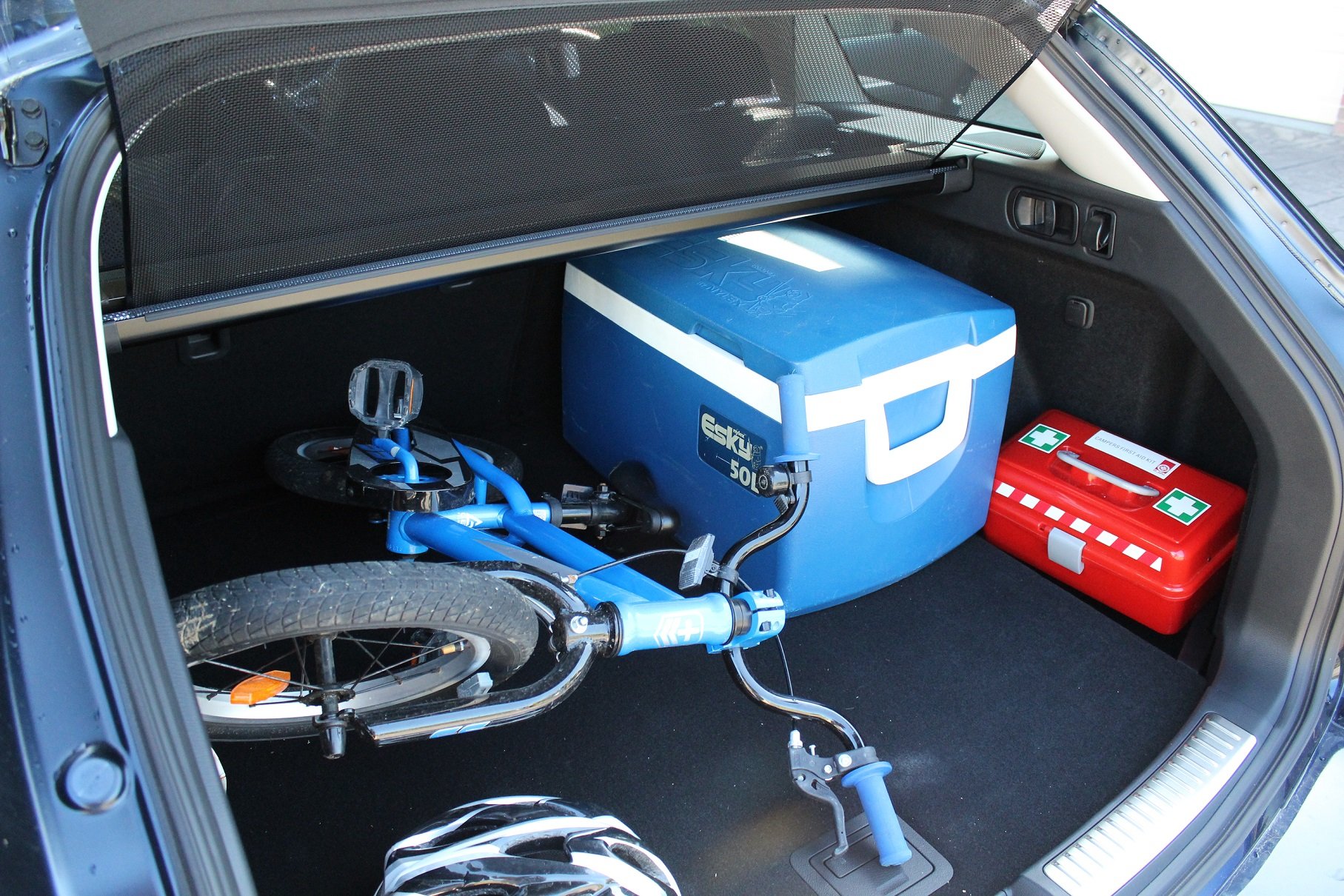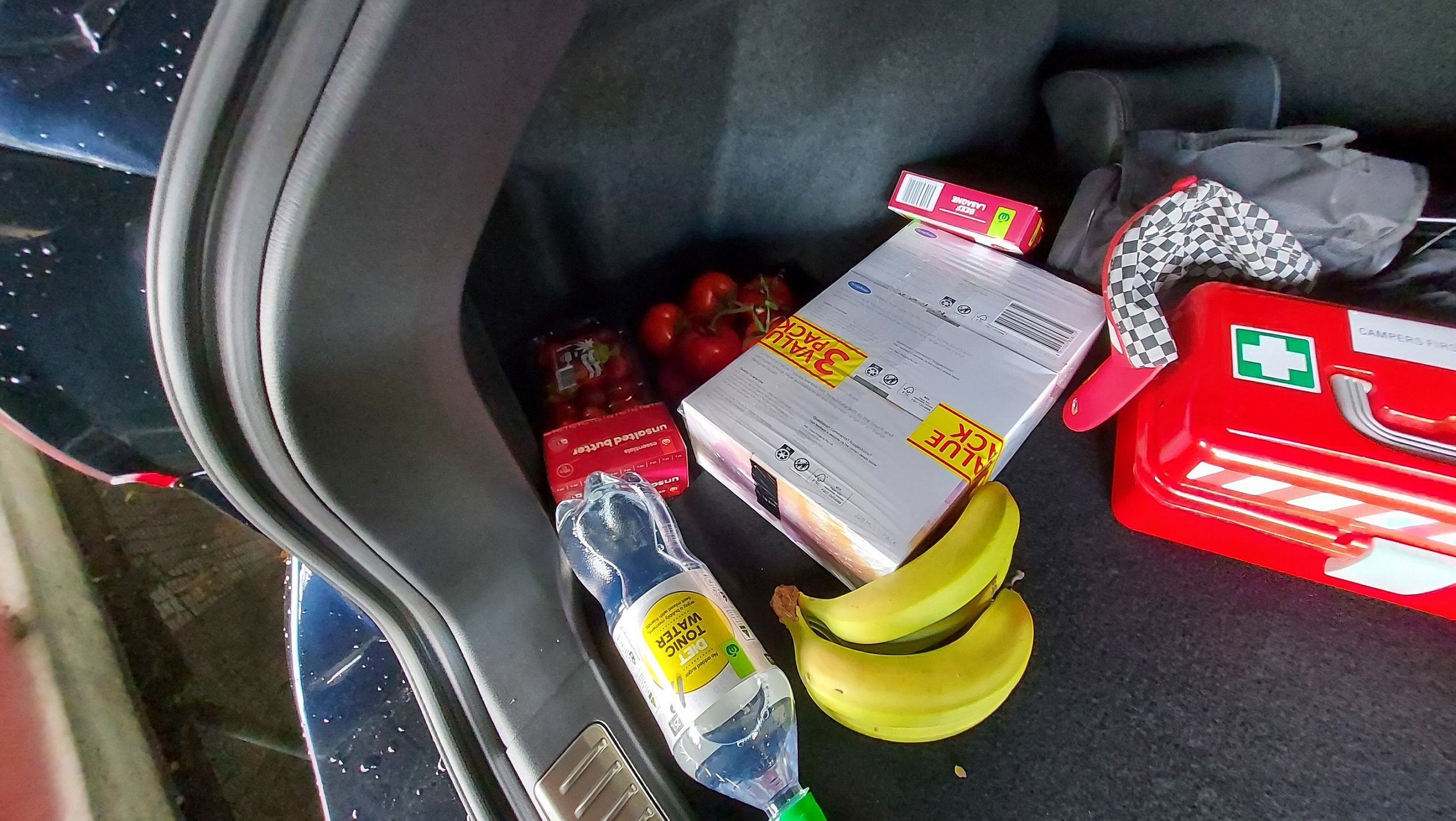Mazda 6 review and buying guide
The SUV might have taken over the Australian new car market, but that doesn’t necessarily mean they’re better. Find out why this elegant wagon kicks SUV arse.
In this review I’m going to lay out why this classy Mazda wagon strikes such a brilliant balance between sultry comfort and a level of practicality that surpasses a large chunk of the higher-riding competitor models.
I know everybody wants an SUV these days - they have that active-wear, sexy soccer mum, wannabe adventurer-type lifestyle oozing from every plastic-clad wheelarch and OMG how good is it just chucking your stuff in the boot and climbing into the seat like some fashionable neighbourhood starlet.
Ugh.
But when it comes to the measurable facts and real-world practicality of an SUV, they are heavily compromised in both ‘utility’ and ‘sportiness’. They’re called ‘Sports Utility Vehicles’ but they’re anything but. They’re not sporty, because they’re heavier than equivalent cars like the Mazda 6 (sedan or wagon) and they’re not as utilitarian because they’re smaller in terms of how much payload and how dimensionally big that payload can be.
Some might argue they’re sportier versions of utility vehicles, in which case, you’re right. They are a compromise on practicality for the sake of - what - sitting higher up? How is that sporty? Sporty Spice wasn’t taller than Posh or Scary, was she? NBA players are not as agile, fast or strong as gymnasts. We’re getting bogged down here. The point is, SUVs have their place and clearly the majority of consumers want them.
But BestFamilyCars is named this way for a reason - because I want you, the mums and dads who have to use their next new car every day for the foreseeable future, to get the most appropriate vehicle possible for your money. In that pursuit, I’m going to encourage you to put your subjective emotions and aesthetics to one side (hard as that is with such a good-looking car, I know). It’s time to apply logic and reason to the Mazda 6 wagon.
BestFamilyCars was loaned the Mazda 6 Touring wagon (pictured) for a period of 14 days, with a full tank of fuel, courtesy of Mazda Australia in Mulgrave, Victoria.
WHY MAZDA’S WAGON WORKS BETTER THAN AN SUV
The Mazda CX-5 offers 442 litres of boot volume. The 6 wagon has 506 litres. That’s 14 per cent more cargo space you can actually use every single day. What if you drop the rear seats in both vehicles, I hear you ask. Sure. The 6 wagon has 22 per cent more space, even still. That’s 1342 litres in the CX-5 and 1648 litres in the humble-bragging wagon.
Having done the volume test, let’s look at outright dimensions in the respective boots. CX-5’s boot is 950mm long, 1050mm between the wheelarches, and 790mm to the roof - measured it myself. And the 6 wagon - 1100mm long, 1030mm wide between the wheelarches and 695mm to the roof. SUV lovers might stop me right there and say, ‘Ah-hah! CX-5 is wider and taller! You lose, Murray.’ But those two dimensions, I would argue, are the most irrelevant in terms of day-to-day familial vehicle operation. In a tradie van, maybe not - height and width are important because you need to get as much stuff in as possible. But a family wagon needs length as its primary load space dimension. Why?
Wagons flex a little differently to SUVs: an SUV shows off by driving on gravel or parking in a small puddle; wagons take whatever you throw in them.
Prams are longer than they are wide or tall when folded away. Sports bags are longer than they are wide or tall. Bikes are long. Boogie boards, surfboards, eskis, luggage bags, pillows, tents portable BBQs - all these things are either long items by default, or you generally pack them length-ways. At least you should do if you’re trying to pack a full car to go away for the weekend. This is why I recommend people buy a Subaru Forester for twins or a Subaru Outback for staggered-age kids where a normal, single-kid pram is in use. In the 6 wagon, I recommend it in either family arrangement, mostly because you don’t need all-wheel drive in the majority of regular suburban running around.
This brings me to my next point. Mazda 6 wagon (and its sedan version) is front-wheel drive only. And no matter what the car industry, Mazda itself or other mums and dads try to tell you - generally speaking, the vast majority of your driving will never require all-wheel drive or four-wheel drive. It might occasionally be needed if you park on a wet grassy slope, or on some sloppy verge to park for a festival or concert or some kind of regional event where parking is ad hoc and unsealed. You might use it then. But if you’re gentle on the throttle, and it’s not a proper quagmire, in most cases you can probably drive out.
For the other 14,900 kilometres of average annual Australian driving, it’s probably going to be on sealed roads, or good quality dirt roads, along the east coast, or in a major capital city or provincial town. And when you do push the Mazda 6 wagon’s accelerator that fraction too hard taking off from the lights on a slippery incline, just like in every other new car on sale today, a system called Traction Control detects wheelspin, cuts throttle input to the engine and in the blink of an eye, the wheels stop spinning so you can drive off normally.
I reversed up my moderately steep driveway in the pouring rain and the 6 wagon didn’t even notice. Admittedly, I do own an AWD Subaru Outback, but I use that drivetrain when I regularly take my mountain bike out and park on the muddy embankment of an overflowing carpark near the Yarra River. It’s up to you to assess how you’re going to use the 6 wagon to determine if you might need AWD. In that case, sure an SUV sending drive to all four wheels might come in handy. But remember - you might wanna assess that boot space if you’re gonna get adventurous. In which case, you might be shopping in the wrong category.
What you can consider with the 6 wagon is a towbar and a small trailer for bikes, touring, camping and generally getting beyond the speed cameras and school zones. An upper-spec 6 wagon GT SP can pull 1600kg of braked trailer, with 120kg of download on the towball, which is respectable. You can get a nice light 6x4 trailer on the back with a bunch of gear to further extend the 6 wagon’s capability. You can also get up to 80kg on the roof, which is basically the same for most mid-size SUVs.
How about cabin space and legroom - surely that’s an easy win for the SUV. Well, when it comes to legroom, which is ultimately determined by wheelbase (because the passenger cell is built in between the front and rear axles for safety and comfort) a CX-5 does have 2.7 metres exactly. That’s pretty good for the entire mid-size SUV category - Tucson & Sportage have 2.75m, Forester has 2.67m, Mitsubishi Outlander has 2.7m, RAV4 has 2.69m. The Mazda 6 wagon then? Yeah, it’s 2.75 metres.
The reason SUVs might ‘feel’ more spacious is because you tend to sit slightly more upright in an SUV, whereas in a conventional car, your legs are given a more extended posture in terms of how the seat and footwell are positioned relative to your body’s natural state. Obviously this is in general, not talking about particularly tall or short people.
On long journeys, it’s going to be better for your spine to be in a 6 wagon than an SUV due to the difference in posture. Sitting upright for long periods is awful for compressing your lower spine and pulling your shoulders forward as you hold the steering wheel. Ask any chiropractor. I asked mine. Not once during my two week test drive did I feel uncomfortable sitting in the 6. And I have a chiropractor, which should tell you something. The seats, even in the back, are a divine place to plonk your rear.
As for the last big claim for SUVs, the ground clearance and ride height in a Mazda 6 wagon are barely worth mentioning because they’re so close. But I will for the sake of settling this. CX-5 has 200mm of ground clearance, the 6 wagon has 165mm - that’s a 35mm difference, which is 3.5cm, or the average length of a child’s thumb.
Certainly, you do tend to sit down into a normal car compared with sitting across or slightly upwards into an SUV, and this can be an advantage if you had elderly parents who might get in or out of your vehicle at some stage. This is one particular strength of the SUV which the 6 wagon can’t match. But just for balance here, getting out of an SUV for elderly is still no easy feat given that some SUVs come with a lower chassis and bulkhead section which runs alongside the seat base. Essentially, the oldies have to stretch their legs over this expanse in order to get the feet on the deck.
Whereas in a car, the foot goes out onto the road surface and they pull themselves up using the roof-mounted grab handle and push with their right leg still in the footwell. I’ve watched this process with my own eyes. SUVs don’t win everything in this regard, I’m afraid.
If you think a Mazda 6 wagon is too big, it’s only 140mm longer than a Mazda 3 hatch, so if 14cm is too much, that’s on you. And you’ll wanna think twice about the much bigger, seven-seat Mazda CX-9: The affordable luxury seven-seat SUV_
Also worthy of consideration might be a Kia Cerato: Big Boot, Small Car_ but there’s no wagon option and the sedan is ideal for maximum boot space. Or there’s the Mitsubishi Eclipse Cross: A bigger, budget-SUV for small families_ which is quite cheap, but in the small-medium SUV category - and it’s categorically not as nice to drive, sit in or use as the Mazda 6 wagon.
Closer in terms of size and quality is the Subaru Outback: The SUV wagon for adventurous Aussie families_ but it’s not as polished as the 6 wagon and that enormous tablet screen is hit-or-miss.
MAZDA 6 WAGON HAS FOIBLES
Like any good vehicle, the 6 wagon has its idiosyncrasies which will require your acceptance, adaptation and maybe even a little appreciation, once you cross those first two bridges. There’s no perfect car, you see.
First thing I noticed about the 6 is the encroaching C-pillar when trying to install your average child into their restraint. It’s kind right there where your shoulder wants to be in order to feed kiddo’s arms through their belts, buckle them in, pull the straps tight and particularly when you initially install the restraint itself. If you’re likely to have a mixed fleet of 6 wagon and SUV in your life, you’ll want to be careful not to forget which one you’re in so as to avoid splitting your skull open (metaphorically) on the door sill as you get in and out, especially dealing with the incessant nature of sassy, spoilt, ungrateful kids who tend to drain your attention at the worst possible moments of ingress or egress.
Where were we? Oh, yes. The camera system in the 6 wagon is pretty good, mostly. But the nature of most physical vehicle cameras is their propensity to dangle water droplets right in front of the lens. This is true of virtually all cars, annoyingly, not just the 6. I’m merely showing you how good or bad it got during my test. Honestly, it’s not unbearable - but you shouldn’t be relying solely on it anyway. You need to also use those mirrors…
Unfortunately, the numero uno problemo I have with all current-generation Mazdas is their use of magnified driver’s door mirrors. Off the top o’ my head, I cannot think of a single other carmaker that uses zoomed-in driver door mirrors in their cars. Only seems to be Mazda - and I do not understand it. The driver’s array of incoming information is, arguably, the single most important aspect to driving a modern car.
The information you and I gather from the driver’s seat needs to be accurate and relevant, simplified and constantly flowing. But a magnified door mirror skews that flow of data to the driver. You don’t need to know about bogeys beyond the scope of your 6 and your ‘six’ - and by ‘six’ I mean your rear. The driver’s mirror is supposed to tell you what immediate threats are approaching you to the side, behind the B-pillar. This is a fact. By magnifying the view, Mazda is feeding you information about vehicles outside you relevance radar.
So when it comes to reversing up my driveway, with massive, immovable bluestones waiting to munch on my six - and my 6 - I have to either rake my head forward to judge the proximity to instant paint destruction or alloy wheel gouging, or I have to manually adjust the mirror. Just to reverse about 10 metres.
I know I’ve gone on about this for three paragraphs now, and I promise this is the end. But I want you to understand this because it’s possibly the first major hurdle you’ll notice as you climb aboard for a test drive. And I want you to also have perspective on this. I don’t think it’s worth scrubbing the 6 wagon or any other Mazda off your shortlist. Overall, this vehicle is here because it’s a great tool for the job. You just have to accept, adapt - and maybe even appreciate a magnified door mirror someday.
Mazda - please stop using magnified door mirrors. Please. Your cars are already very good, overall. Magnified door mirrors do not enhance; they detract.
To you, the consumer, adjust your door mirrors outward until you cannot see the side of the vehicle. Blindspots will magically disappear. I explain this further in my report: Three easy steps to safe driving: like a fighter pilot_
USING MAZDA 6’s BOOT, BACK SEAT & LOADING UP
I’ll do my best not to double-over ground already covered, but we need to also talk about the daily functionality of the 6’s rear half, because this is where the magic happens.
The cargo blind upon introduction is a bit complicated at first, but that’s mostly because Mazda had a better idea than the standard pull-out cargo blind that latches into plastic cut-outs in the rear D-pillar inner cowling. Instead Mazda found a way to fix the cargo blind to the tailgate itself - and it’s actually quite brilliant.
in dimensions I took with my own tape measure, the boot is 1100mm long to the bottom of the seatbacks. Then the backrests rake gently rearward, until you’re left with 920mm by the centre of the backrests. The cargo blind, if you have it in place, takes up the rest of the vertical height, save for about about 250mm between the blind and the roof.
Horizontally, you get 1030mm between the 6 wagon’s wheelarches, and up to 1420mm including the side wing compartments, but that’s only going to benefit for carrying long-ish things or maybe wheels on strollers, that’s if you’re not already using those compartments for stuff like stowing rubbish, baby wipes or things you want kept out of sight or off the boot carpet.
Vertically, there’s 450mm from the boot floor to the cargo blind, or removing it, you get 696mm to the roofline which tapers down courtesy of the sloped roof. It’s not as boxy as the old Commodore Sportwagon, for example, but it’s still quite usable.
As for the boot opening itself, the aperture is 1050mm wide, about 400mm ‘deep’ from the most rearward point to the point at which the tailgate mounts to the roof and the cavity ends, and thanks to a neat flat floor meeting with the bootlip edge, it’s 650mm in height from that bootlip to the roof. And happily, the side shape of the boot cavity is not curved or shaped to allow for structural mounting points of the gas struts or big, bulky taillights as is often the case in an SUV. They’re just straight-cut sides, so you can put big bulky boxes straight in.
At the risk of turning this review very, very boring - at first I hated the double-trouble cargo blind arrangement in this vehicle. I tend to dislike cargo blinds in general at the best of times, but after a few deep breathes and a drizzle of patience, it started to make sense.
The vertical blind acts as a kinda of lightweight cargo net to stop any objects in the boot clocking your rear passengers in the back of the head if you have to performance an emergency stop, or possibly swerve or, even worse, are involved in a crash. It does also save you getting afternoon summer sun beaming through the rear window into your rearview mirror on those long drives home from holidays or work. It is transparent, so there’s no issue with actually still seeing what’s behind you. Just take your time practicing with the fixings at either end of the blind - you have to lock them into place kinda evenly otherwise they won’t line-up properly.
The horizontal blind is much simpler to use and the roller feels sturdy to retract and attach - which it does in a very interesting way. It actually fixes onto the tailgate itself, which is brilliant. This is so you can open the tailgate, reach in to grab something and keep the blind in place without having to detach and retract it excessively and thereby wear out that mechanism prematurely. It’s genius. In many cases such as when you just have small loads on board, you can just leave the cargo blind fixed in place for the majority of the time and rarely have to detach it.
If you’re easily frustrated by slightly technical or fiddly mechanical things, you might want to consider just not use the trick cargo blind system, and just remove it.
But if you're not like me and don’t get sweary at inanimate objects, it becomes quite a smart thing to use. I can see whybtheyve done it and it isn’t completely crap. I did get the hang of it and in time would find it quite useful.
Using the 6 wagon's boot is a rather slick sequence to do daily. There’s easily enough room for overloaded green shopping bags, you can put smallish individual items in the side cubby holes, and when you need to bring home long bulky stuff from hardware, furniture or electronics stores, there's a cavernous space available with the drop of the back seats.
Oh, and there’s two shopping hooks, one on each side of the boot. They’re only rated to 3kg each, so no dangling the dog food cans from them.
Something i’ve observed with lots of SUVs is the scratches, scuffing, dents and general filth that accumulates on the rear bumper and tailgates. This happens because that area is higher up and therefore closer to the objects you're lifting into the boot area.
Instead of picking things up and placing them in a more downward motion into the boot of a wagon (or sedan or hatch), people tend to pick up and place in a more upward-forward trajectory, so the bottom of packing boxes brush over the bootlip, the heavy shopping bags biff the protruding bumpers, and the corners of bulky, long rectangular items have a tendency to slide across the lip edge of the boot.
The end result is it looks like your tried to bath a jaguar in the boot, like some kind of Amazonian Big Cat Grooming franchise.
In an ordinary wagon, you pick up the item, you approach the boot, and you place the item in that downward-forward trajectory and nothing gets bashed or nicked. I know this because I have two SUVs and am guilty of this myself, but found it was never an issue with the constantly loading and unloading I did during my testing period. It’s quite lovely, actually. You don’t realise how good it is until you’re not damaging something.
Even better, when you pull up somewhere to open the boot, have a snack and enjoy the view, you can actually sit in the boot on the floor, rather than leaning up against the bumper with your derier half on the floor itself, scratching the paint and plastic with the studs on your jeans or grazing the trims with zippers and keys.
Under the boot floor is a space saver spare, which is typical of Mazda, along with the usual tyre changing tools. You might get a few small things in that cavity in the event of a big pack for a long haul holiday trip, but I would highly recommend a decent set of roof racks with a luggage pod to extend the 6 wagon’s practicality envelope even further. These cars look quite good with one on.
Parking a 6 wagon is so effortless thanks to its weirdly small footprint and modest proportions. It's twice as easy as an CX-5 where you’re never quite sure where the front corners are, but you make an educated guess. And it’s about 10 times easier than a CX-9 which is so ridiculously long, particularly in the front overhangs and determining where the bonnet actually ends. The 6 wagon just doesn’t have that oversized, swollen aspect to its shape. It just slots in everywhere really nicely, regardless of whether you're going in nose first or threading the needle in reverse.
And I do like that the 6 wagon misses out on the patchy Nintendo 64 graphics you’ll find in the 360-degree camera system of the top spec CX vehicles.
Fitting child seats in the 6 wagon is relatively easy, once you’ve suitably gotten the cargo blind out of your way, because you won’t be able to get your fingers over the back to clip in the top tether anchor point while that blind is in full sail. Happily, as oyu’ll see below, the anchor points are nice and high up the backrests so within easy reach for the shorter among you, like me. Then there’s the doors…
The rear doors open out at about 70 degrees relative to the side of the car. If you’re even a moderately tall dad or mum, or if you’re ‘big-shouldered’, you’ll find the doors simply in-the-way. It was a bit of effort getting the big restraint in lengthways and then turning it to position in-place, but once you’re in, you’re in and seldom does a restraint have to come in or out frequently. It might not be such an issue for you. Plus, the capsule, which is a Britax model, can only go in forwards anyway, just like most other vehicles, because you have to position it to line-up with the locking base.
The centre armrest folds down to offer two bottle holders which will hold small and medium sized kids drink bottles, and there’s a slot for putting a tablet within easy reach of the kiddos to fight over. There’s also a lift-up lid which you can use to stow snacks, small books, toys or beach collectables. Once the capsule is installed, the back seat gets pretty cosy, but that happens in most small and midsize SUVs regardless.
Two ISOFIX restrain anchor points await you on either outboard seat, with plastic guides and covers making it easy to bung those connection in without having to poke and shove and stretch and swear and sweat like in some Kia backseats. To be fair, Mazda is kinda tempting families to lose those little plastic caps, which you’ll wanna stash in the map pockets or that centre armrest cubby hole.
Three top tether anchor points are all within easy reach of installers or which every mum or dad lost in rock, paper, scissors. Quick tip: When fitting your seats, remove the headrests and store them in your home somewhere safe, especially if you’re going on longer drives with a full boot, because you’re going to be finding space is at a premium and those lovely leather headrest are gonna get in the way, get damaged, thing might rest on them in the boot, or you’ll lose them somewhere.
Another genius aspect of the wagon’s boot design is there are no massive wheel arches robbing you of cubic inches, nor protruding into the main boot thereby making your Tetris holiday packing a bigger ordeal than it already is. While you’re back there, you can also drop the seats using the release handles in the boot, but you’ll notice that the split-folding configuration is 60:40 left:right (when standing at the rear facing the back rests). The narrow section is on the right-hand side, meaning that if you have kiddo harnessed in on the kerbside (LHS), you won’t be able to drop the centre section of the rear seats together with the right side in the event you have a wide bulky item to bring home after a last-minute request from your dearly beloved to stop in at Bunnings or JB Hi-Fi etc.
Make sure to use old towels under the child restraints you install so that you don’t crease, tear and stretch those lovely leather seats.
Your Ultimate Child Seat Installation Guide: Common mistakes and getting it right_
THE INTERIOR, GETTING COMFROTABLE & DRIVING
It’s a rather effortless task to find a comfortable driving position in this vehicle. Blokes with long legs or any netballer will appreciate being able to have your legs extended on long journeys, while the shorter among us will find it quite natural to have the steering wheel in the right position and getting a good view over the bonnet at out into the hazard-rich environment surrounding your cockpit. The Touring model I drove had electric seats with dual memory function so you can adjust and set a position for the tallest of the drivers in your household, and the lesser statured.
The seats themselves are unnecessarily excellent for comfort. Not too buckety, not too flat, not too long or short in the base (at least for me), and good position for the shoulders without having some big chunky moulding like you might find on some European SUVs or sportier sedans.
The steering wheel is beautifully simplistic, it sits nicely in the hands at 9 and 3, and visibility is sublime in all directions, save for the rear D-pillar, but that’s on on this particular car, and it’s a far, far worse problem on literally every single SUV I’ve ever driven. Mirrors adjusted correctly, there are essentially no blindspots in the 6 wagon because you’re competing with other SUVs for height and presence on the road, but you are far more cognitively aware of who and what’s around you due to the nature of being smaller and more manoeuvrable than everybody else in their cumbersome, awkward, overblown SUVs.
I particularly like Mazda’s steering wheel and drive information display because they both give you exactly what you need - the essentials - like cruise control functions on the right with individual buttons for increasing or decreasing the radar cruise’s distance presets. And on the left, tio match the MZD Connect infotainment screen, is song/station skip up or down, phone controls and the volume controls - again, all with their own button per function. Simple to use, minimal distraction, it’s like Mazda has paid attention to Ergonomics 1-0-1 in Automotive Design School. (Not a real thing.)
The Bose sound system is pretty good without being awesome, but you can adjust the bass inside a few sub-menus without much overthinking. And I like how much easier it is to access the proprietary Mazda system when you’re already inside Android Auto, compared with some carmakers who put their home button on the far side of the screen where you can barely reach it. Mazda has put it right next to the rotary selector dial so you can just go boom - straight to the main menu to then find settings, sound and the equaliser before cranking up da bass. Boi.
Unlike the slidey centre console lids on many other vehicles, the one Mazda has designed feel robust and mechanically simple (two moving parts), without being cheap and poorly designed - like the one Subaru designed in my Outback which has one moving part and therefore should be more reliable, but is an absolute piece of sh!t.
The cupholders are positioned in a linear way so as not to take up stupid amounts of room, they’re deep enough to hold coffee cups, water bottled of medium diameter but they’re not surrounded by the rest of the plastic console thereby making it hard to reach in and grab a takeaway coffee and accidentally pull the lid off to burn yourself and spill coffee into every nook and cranny. Mazda has not cheapened out on little things that make this car scream ‘longevity’ - taking the spring-loaded holding teeth in the cupholders. They’re not some cheap rubbery tongue waiting to snap off after three years sitting in the sun going brittle. They’re plastic with a small spring to provide resistance to inertial loads as you corner.
To be efficient with space, Mazda has put the 2 x USB-A ports, the SD card port, the 12-volt power outlet and the auxiliary cable input under the centre console lid so you can connect your cable and keep it running along the gab between the seat and into your phone up front. This is a much, much more practical solution than the lazy effort other brands make sticking them into the fore end of the centre console so you have to constantly navigate around that pesky rat’s tail USB cord when operating the parkbrake, the transmission shifter, drive mode selectors and the rest.
Given that this is not even remotely close to a sports car, appreciate that Mazda hasn’t shoved another meaningless button on the steering wheel like the one that changes the vehicle into ‘sport’ mode. Instead, they’ve stuck it near the transmission shifter (because that makes actual sense), and they’ve left the important vehicle operational stuff on the steering wheel. Paddleshifters sit nicely at your fingertips, and the spokes of the steering wheel are moulded to fit the natural, neutral position of the human hand, unlike the jiggers in, say, a Toyota, which are thin and flat and start to labour on your fingers and joints after sustained driving.
You will need to accept that Mazda uses engine stop-start software to deactivate combustion when you come to a complete stop, like at the traffic lights. You can disable this function manually, which is nice, by pushing the button mounted on the under-dash, just above your right knee. And yes, this system will default back on every time to turn the vehicle of and cycle it on again. You’ll need to try to make this deactivation part of your start-up routine, and if you find that hard to do, don’t let it put you off considering this otherwise excellent vehicle choice. I’ve lived with a Subaru for nearly six years and I remember to turn mine off about 50 percent of the time. It helps prolong the starter battery’s life, which you’ll want to do, because replacement lead-acid batteries for stop-start systems are considerably more expensive than the convention types.
But we’re talking the difference of a hundred dollars or something, compared with the thousands you’ll save buying a 6 wagon over a sometimes less competent SUV.
The Mazda 6 range rolls on 18-inches mostly, like in the Touring, but the sportier SP and Atenza models get 19-inch jobs. But I would be hard pressed to go over 18s because the ride in this vehicle is unbelievably good. It rides beautifully through off-camber country roads and it hits potholes and speed humps with surprising composure - very minimal reverberation after the initial bump and thump.
The steering is beautifully weighted for easy turn-in without being devoid of what us petrolheads call ‘feedback’. Basically, when you turn the wheel, it’s direct and low workload for the shoulder and forearms, but it’s not so light that it just feels numb to operate. Toyotas and small SUVs often have this problem because they’re tuned for grannies in carparks.
The epicyclic automatic transmission is also a very well-sorted out unit. The shifts are smooth and it’s rarely ever caught in the wrong gear - and when you do give it a bootfull, kicking back a single gear it’ll get up and go with decent vigor. You’ll have to give it a good rev to accelerate hard, but never did I find it struggling for power. After all, it’s not a sports car. It’s a family wagon.
Transmissions: Which one works for your driving?_
I would encourage travelling families to drop a few hundred bucks on a good set of roof racks and a luggage pod to make the 6 wagon’s practicality level level-up to Boss Mode.
Actually driving the 6 wagon is wonderful. It’s tight and firm enough to brake, turn into and exit any corner with precision and that positive feedback I mentioned, and it’s soft enough that nobody will ever complain that you’re driving like a moron on some twisty back road. Certainly the family will be able to fall asleep while you save tenths of a second at every opportunity on the drive back to homebase after a week’s holiday in wherever.
The 2.5-litre four-cylinder makes 140kW of peak power at 6000 revs, but you’ll rarely be using all that grunt unless you’re punching it to overtake something on the freeway or some dual-carriageway.
With a power-to-weight ratio of 92kW per tonne, but against a Mazda CX5 Touring diesel with 140kW peak power also - the latter can only manage a ratio of 80kW per tonne. Why? This is a five-seater, with the same engine and same power. It’s because the equivalent CX-5 weight 155kg more. The CX-5 is 11 percent heavier but can only carry the same number of people, has a smaller boot (1340 litres or 483 litres versus 1648L or 506L in the 6 wagon), and the CX-5 costs an additional $4500 more. And it’s the same story with the petrol 2.5 petrol, only there’s an excess of 6 percent weight in the CX-5 Touring, and $3800 more in price compared with the equivalent 6 wagon.
On purely rational criteria, why would you buy the CX-5? The 6 wagon is objectively superior.
There’s nothing in the Mercedes that you actually need over a Mazda 6 wagon, which is considerably cheaper, better looking and lighter.
I came away kinda loving the 6 wagon. I have a natural bias for wagons anyway, but that’s only based on my life being filled with examples of why wagons are utterly brilliant and better than vehicles costing more and doing less.
Much like the Subaru Levorg, the 6 wagon is an anomaly in the Mazda range. And it must be acknowledged that there is a small chance this and the 6 sedan could become notionally obsolete in the eyes of Mazda's global accountants. These vehicles need to turn a profit for the brands or they get replaced.
And I encourage you, as a consumer, to consider this in your purchasing decision, but also remember that for the next five to 10 years, you can’t control much of the goings-on at a massive multinational car company.
But you can put your money on the beat tool for your transport needs. And I defy anybody to convince you an SUV is the only option, when in fact, the 6 wagon does everything of its taller SUV market rivals, but for less money.
Better, a bigger vehicle does not make.


